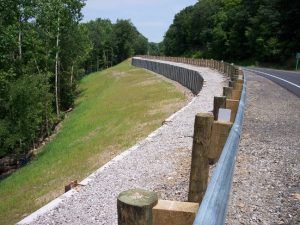Could a Landslide Impact Your Development?
June 18, 2020
Landslides
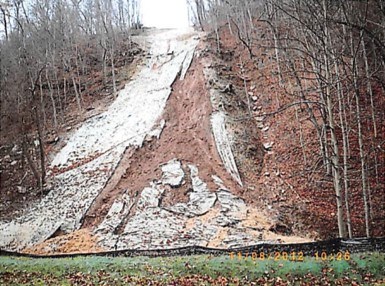 Landslides commonly referred to as “slips”, occur when soil, rock, artificial fill, or a combination under the influence of gravity travel in a downward or outward movement. Landslides in the United States cause roughly $3.5 billion in damage annually, according to the US Geological Survey.
Landslides commonly referred to as “slips”, occur when soil, rock, artificial fill, or a combination under the influence of gravity travel in a downward or outward movement. Landslides in the United States cause roughly $3.5 billion in damage annually, according to the US Geological Survey.
Many natural and man-made factors contribute to landslides. Did you know that almost every landslide has multiple causes and some geographical areas may be more prone to them? Many situations call for technical knowledge of local soils, geologic conditions, and an understanding of previous and planned development activities to evaluate the potential risk of landslide occurrence and to mitigate the landslide.
Some Sites Are More Susceptible to Landslides
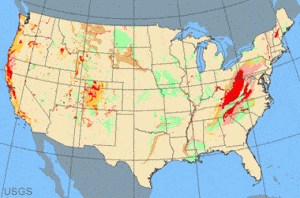
Map of relative landslide incidence and susceptibility across the United States. Red and pink areas have the highest incidence and susceptibility. Source: United States Geological Survey.
Some geographical areas are more prone to landslides due to the following region-specific reasons:
- Weak soils – Portions of the Midwest and Eastern US have landslide-prone soils. These geographic areas have shales or rocks composed of clay, that are weaker.
- Rainfall – Intense rainfall, snowmelt, groundwater, and water level changes can impact slope stability.
- Erosion – The movement of individual grains of soil by water or wind. This can occur near the toe, or bottom, of a slope by rivers or creeks, affecting slope stability.
- Weathering – The gradual break down of rock, soil, and minerals, which can affect slope stability.
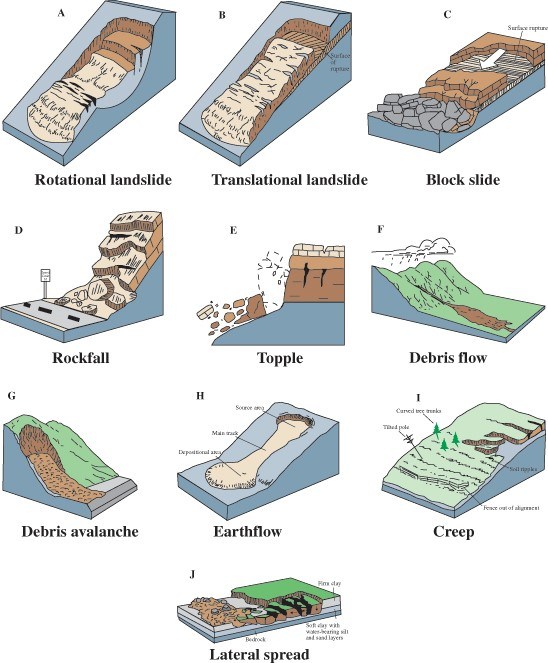
Schematics that illustrate the major types of landslide movement. Source: United States Geological Survey.
Common development (man-made) activities can also cause landslides to occur, including:
- Additional loading – Adding load or weight to the top or crest of a slope can create an unstable slope.
- Excavation/undercutting – The process of digging and removing soil to make an area hollow. This process can cause an oversteepening of a slope, decreasing its stability.
- Poor drainage – Facilitates saturated slope soils, thus creating a higher likelihood of slope instability.
- Removal of trees or vegetation – Trees and vegetation provide a root structure that anchor soil and remove excess water that could over saturate the soil.
How Can The S&ME Landslides Team Help?
S&ME’s dedicated Landslide Services Team can evaluate landslide potential during the planning and design phase of development, and help with an emergency landslide and/or slip repair needs. The S&ME team is comprised of a versatile staff of geotechnical engineers and geologists who have developed an efficient and cost-effective phased approach to landslide evaluations that is used in multiple states, including PA, WV, OH, KY, TN, and VA.
The Landslide Team at S&ME uses the following phased approach to evaluate and help mitigate landslides:
- Phase 1 – Initial Geotechnical Evaluation includes a paper study, site visit, and possible repair approaches.
- Phase 2 – Geotechnical Exploration includes field drilling, lab testing, stability/structure analyses, and repair options matrix with cost estimates.
- Phase 3 – Repair Design consists of construction drawings, details, and specifications.
- Phase 4 – Construction Support involves administration, oversight, and testing services.
S&ME Landslide Projects
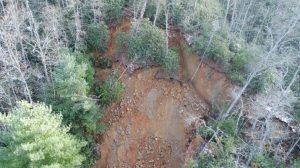 NC HWY 28 Rockslide Correction – 3D Modeling with a Drone
NC HWY 28 Rockslide Correction – 3D Modeling with a Drone
Our team reported within 24 hours to provide emergency aerial photography and a three-dimensional model for a rockslide located on Highway 28, near Fontana Village, North Carolina. Site conditions were mountainous and heavily forested terrain during an active rockslide. The team was able to safely and efficiently capture over 150 photographs and 4K of video of the site between 30 feet to 50 feet above ground elevation. The team created a surface model from the captured images.
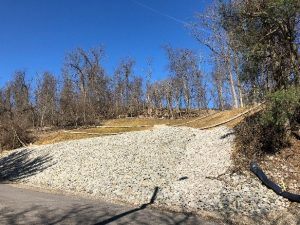 Wheeling Hospital Flynn Ave Slide
Wheeling Hospital Flynn Ave Slide
S&ME’s Team collaborated to prepare plans and specifications for the repair approach and provide on-site owner representation, oversight, and construction testing during repair work in Wheeling, WV.
The S&ME Landslide Team completed a preliminary engineering phase through the final design phase of an approximately 600-foot long active landslide along State Route 772 in Ross County, Ohio.
Confidential Slip Policy
As part of a WVDEP Consent Order, S&ME performed a root cause evaluation of 13 landslides along pipelines in northern West Virginia, that included site visits, photographs, GPS mapping of slide features (head scarps, toe bulges, seepage, bedrock outcrops), existing landslide mapping review, geologic/geohazard literature review, and determination of possible landslide causes and repair approaches. S&ME used the information to develop a Slip Avoidance, Prevention, and Remediation Policy.
Contact Us
The S&ME Team welcomes the opportunity to discuss your specific site development and/or landslide concerns. Please contact:
 Beth Meek, PE – Principal Engineer / Geotechnical Area Manager
Beth Meek, PE – Principal Engineer / Geotechnical Area Manager
cell: (614) – 578 – 8261
For more information about S&ME’s geotechnical engineering services, visit: https://www.smeinc.com/services/geotechnical/

